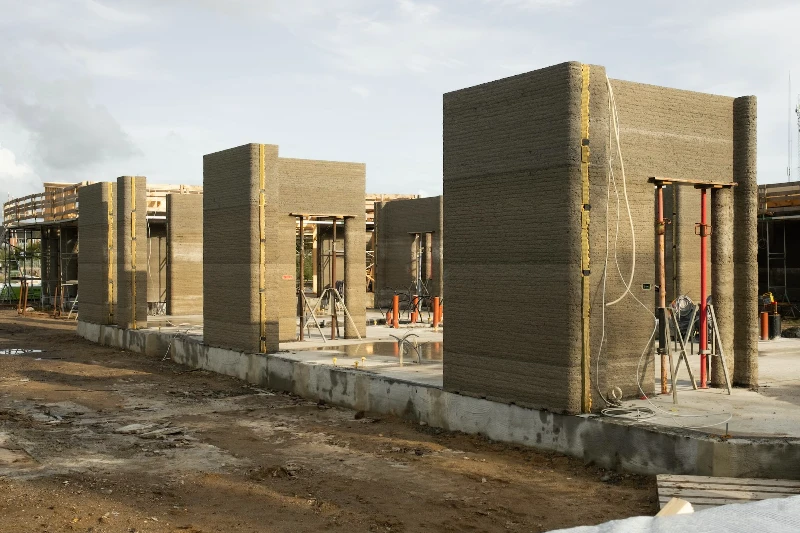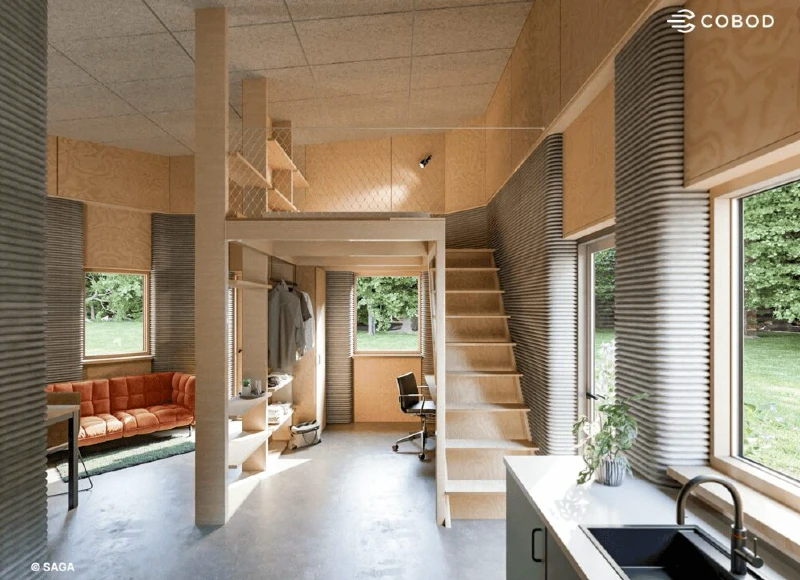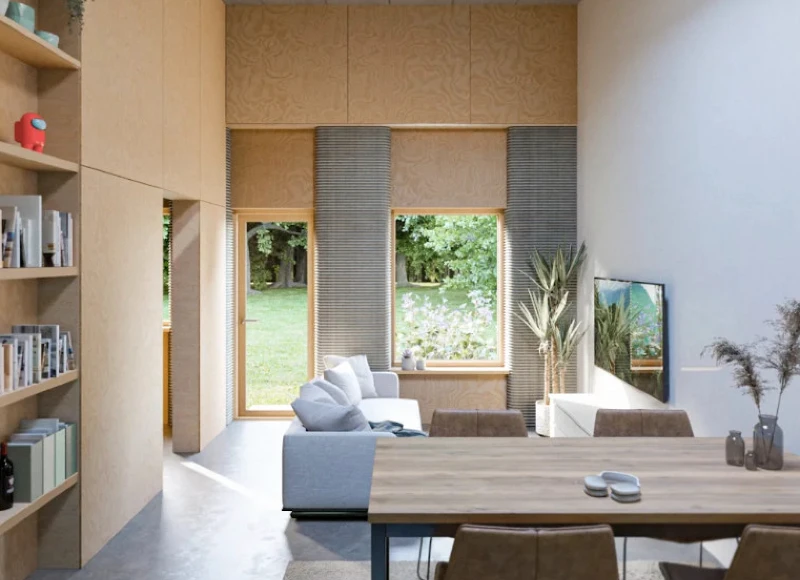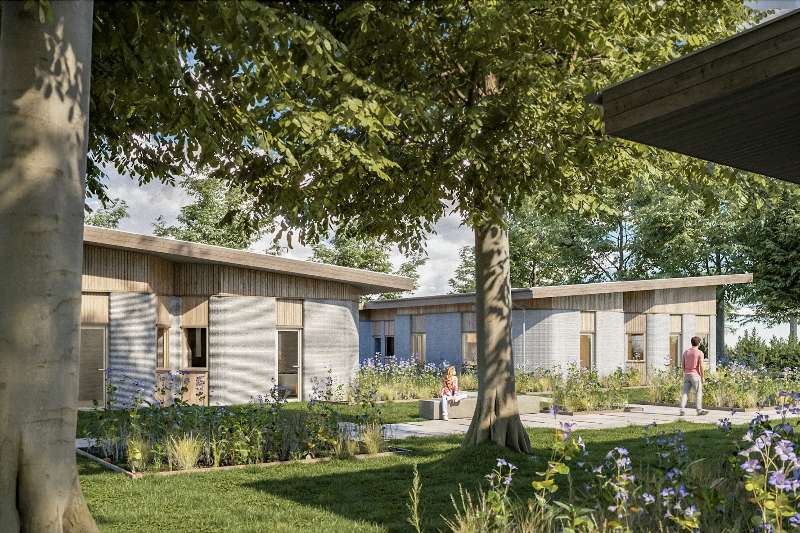Europe's largest 3D printed housing project has advanced to the next phase: 3DCP Group has completed the on-site printing of 36 student apartments in Holstebro, Denmark. Built for affordable housing provider NordVestBO, the project is located near VIA University College and consists of six buildings, each with six student apartments, which together form a connected residential community created using large-scale 3D construction printing. (Main image: Rendered exterior of the Skovsporet settlement, showing how the 3D printed buildings were arranged to preserve existing trees and integrate the housing into the landscape. Source of all images: SAGA.)
The project, called Skovsporet or forest path, covers a total of 1,654 square meters. The apartments are between 40 and 50 square meters in size and have a kitchen, a work area, a living area, a bathroom and a double bed. The interior environment, designed by SAGA Architects, combines 3D printed concrete wall systems with coated plywood and glass surfaces. Sloped ceilings and skylights bring natural light into the units and increase the perceived space.

A key goal of the project was to demonstrate scalable delivery using automated printing. Printing time was reduced from several weeks for the first building to just five days for the final building, which equates to more than one apartment per day. A three-person team operated COBOD's BOD3 construction printer, which runs on a ground-based rail system and enables uninterrupted printing along the Y-axis with millimeter precision.


“The results at Skovsporet show how 3D construction printing can realize large-scale projects faster and more efficiently,” said Henrik Lund-Nielsen, founder and managing director of COBOD International. “The technology is ready for multi-unit housing developments.”
Check out their story
Material efficiency and environmental integration
The printed walls use D.fab concrete, which contains FUTURECEM, a low-carbon cement developed by Aalborg Portland. Material is placed only where structurally necessary, reducing waste compared to traditional concrete construction. The print layout was planned to preserve around 95% of the existing trees on the site and to embed the facility into the surrounding landscape.
The six buildings are arranged around shared courtyards and are supported by landscaped walking paths and bicycle parking spaces designed to encourage informal exchanges between residents.
Looking at implementation, Mikkel Brich, co-founder of 3DCP Group, said: “Skovsporet has proven that 3D construction printing can meet the needs of subsidized housing construction while maintaining precision. As we have learned from each building, productivity has increased and we expect further increases in future projects.”
With printing complete, work has now shifted to interior design and final assembly.
You can find the 3DCP group HERE
